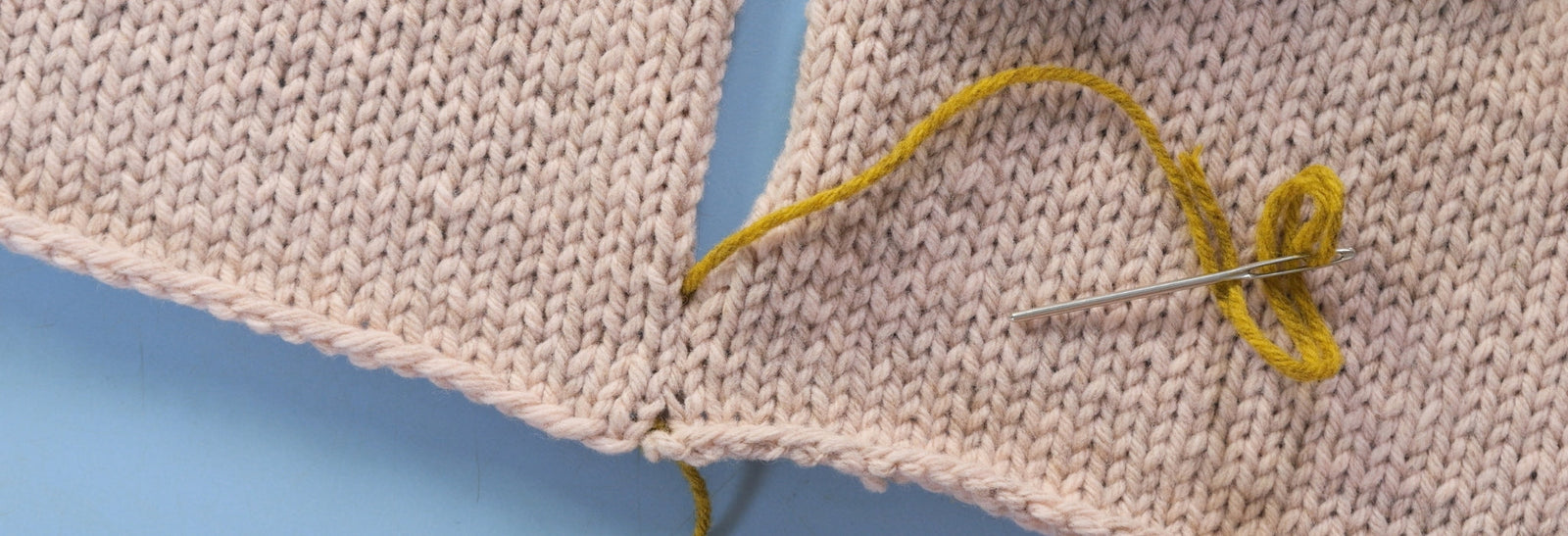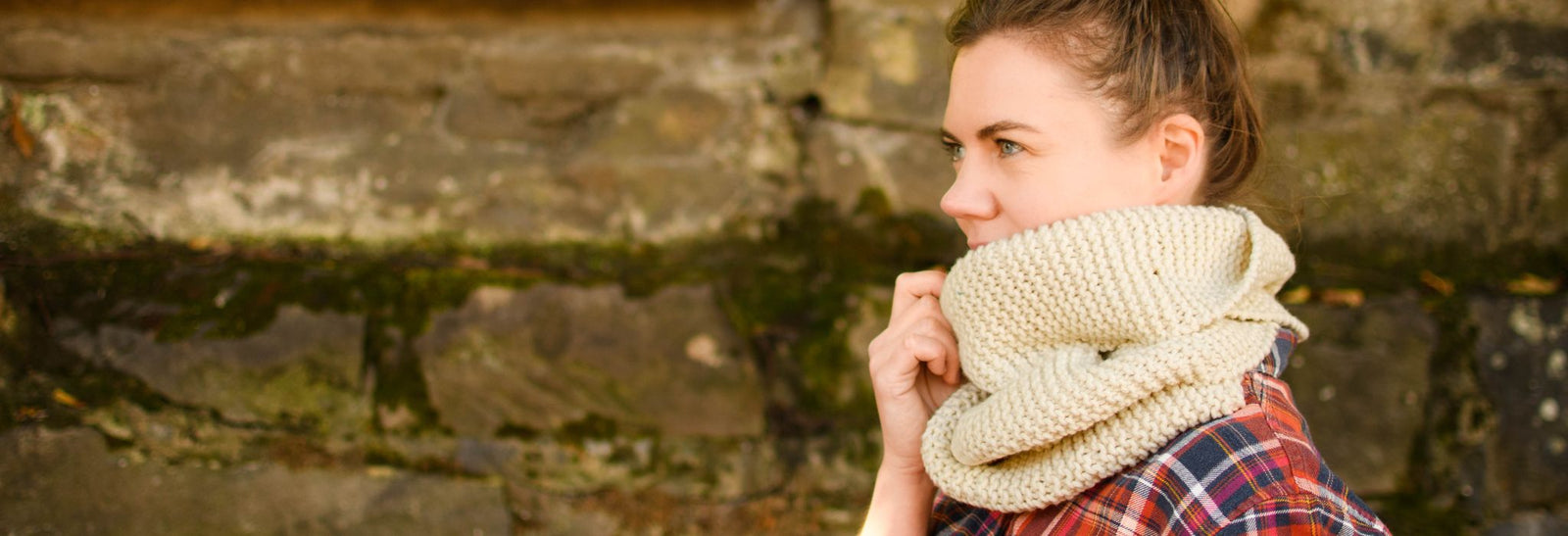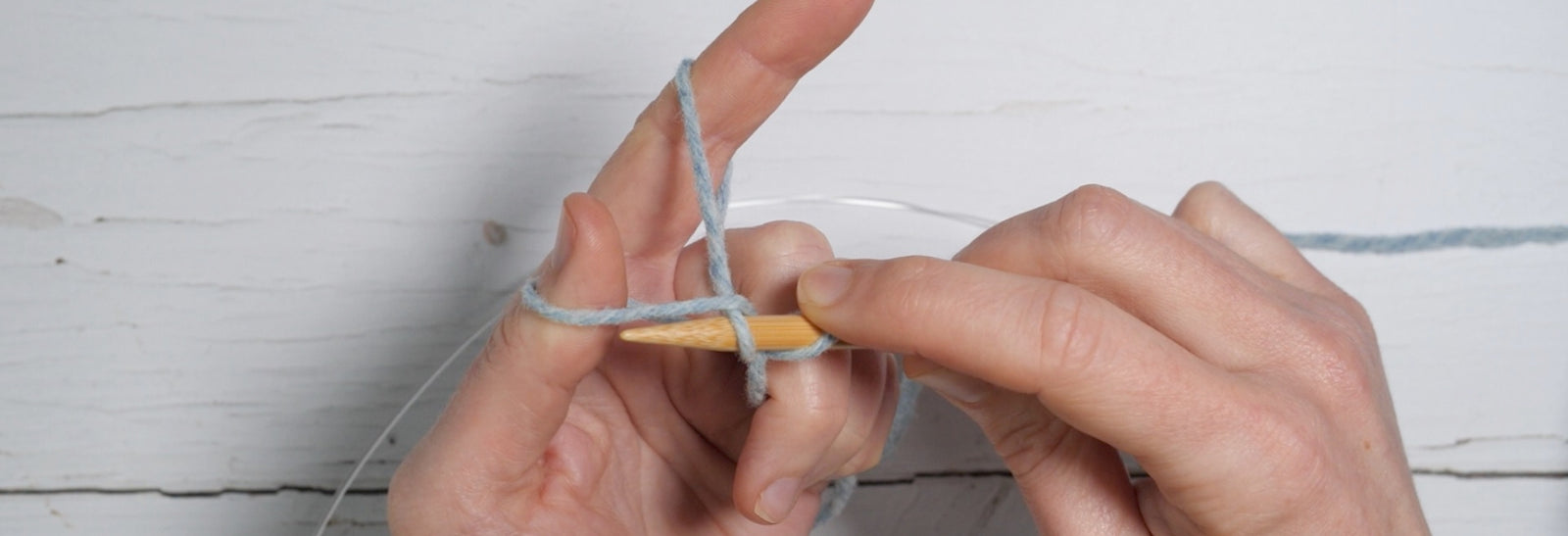Your Cart is Empty

Abbeyhill: Design Process
September 12, 2020
Our founder Ysolda Teague writes about the design process and inspiration behind her new sweater pattern Abbeyhill.
I began designing Abbeyhill with a stitch pattern, and a completely different design idea. I originally developed the cable pattern for the Llawenydd shawl — when we recently revisited it for some new photos I couldn't believe I hadn't done more for the stitch pattern.


I began swatching, with the goal of turning the diamond shape of the cables into wedges for a round yoke.

I enjoyed working out how the cables would grow organically from the neck ribbing, but quickly realised that my ideas were resulting in wedges that increased too dramatically to fit around a yoke, and the initial section was so densely cabled I was worried it would be uncomfortable.

There were several ways to solve these problems: I could have spaced the initial cables out more, leaving negative space between them at the neckline. Maybe one day I'll try making that sweater, but for Abbeyhill I went down a different path. A couple of years ago my wife and I decided to give each other sweaters for Christmas, without the pressure of knitting them. I received a beautifully seamless yoked sweater from Toast with an interesting subtle yoke, in a gauge I would never knit in. The yoke shaping intrigued me, it was arranged in wedges, or spokes, formed by stacking decreases on top of each other in a feathery sort of way. When I examined it I realised that part of what made it comfortable was that the decreases were closer together over the sleeves and further apart over the chest.

I set the cable pattern aside and started swatching feathered decreases. I realised that, with some initial counting to set up all the markers for the spokes, I could create a pattern that was very straightforward to follow. The feathered decrease pattern is simply formed by alternating decrease rounds: one with a k2tog after each marker and one with an ssk before each marker.
I considered making a simple stockinette sweater with this yoke design, but I couldn't let go of putting those Llawenydd cables on a sweater, so instead of placing them around the yoke I moved them to the bottom edge, where they blend beautifully with the ribbing.
Creating the pattern presented a few challenges. The first version of the yoke came out much too big: I'd added some ease to the yoke depth so it would drape well, but had overestimated how much was necessary, and the stitch count hadn't been reduced when the sleeves and body were joined so there was a lot of excess fabric. I solved these problems in two ways: I simply reduced how much ease was added to the yoke depth, and I added additional decreases in the first section of the yoke, at the "spoke" markers closest to the body and sleeve joins. Those additional decreases, combined with refining the exact placement of the spokes and some short rows at the neck created a fit I'm really pleased with. There's enough positive ease for the boxy, drapey style, and the fit still looks refined (and is comfortable to wear!)

Grading Abbeyhill also had some challenges. I grade patterns in an excel spreadsheet and making sure that the yoke directions for every size worked and were clear to follow required some interesting formulas. Round yokes can be amongst the simplest of garments, but across a wide size range the shaping has to adapt to very different relationships between chest, shoulder and neck circumferences. Seeing our preview knitters finished projects, and how happy they were with the fit, made all the hard work worth it. I'm looking forward to using yoke shaping on another design soon.

If you're casting on we'd love to see - use the tag #AbbeyhillSweater so we can all swoon and admire!
Also in Journal

Learn to Knit: Mattress Stitch
March 29, 2023
By following our step-by-step mattress stitch knitting tutorial, you'll learn how to make your seams look beautiful and how best to prepare your knitting so that when you seam it with mattress stitch, it goes smoothly on the first try.
Read More
How to Knit a Scarf: A Beginners Guide to Scarf Knitting
March 23, 2023
Want a quick and easy beginners tutorial on how to knit a scarf? This garter stitch scarf is easy to knit and requires just 3 skills; casting on, the knit stitch and casting off.
Read More
Learn to knit: the long tail cast-on
February 03, 2022
The long tail cast on is a great multi-purpose knitting cast on and the perfect place for beginner knitters to start. Learn how to work the long tail cast on and how to estimate the length of yarn needed with our clear step by step tutorial and video.
Read More Recent Articles
- Learn to Knit: Mattress Stitch March 29, 2023
- How to Knit a Scarf: A Beginners Guide to Scarf Knitting March 23, 2023
- Learn to knit: the long tail cast-on February 03, 2022
- How to Kitchener Stitch December 09, 2021
- Crochet Provisional Cast-on December 02, 2021
- Learn to knit: How to knit in the round with double pointed needles November 25, 2021
- Learn to knit: How to knit in the round using the magic loop technique November 25, 2021
- Learn to knit: How to knit in the round November 25, 2021
- Knitted Gift Ideas for you and your loved ones November 18, 2021
- Celebrating our Porty Hat Preview Knitters October 28, 2021
Free resources
-
KALS, step-by-step pattern guides and free patterns
Learn brioche with the free Daniel's Hat pattern
Tombreck - a free chevron beanie pattern
Working the brioche neck detail on the Polwarth sweater
Basics
Casting on
Decorative Channel Island Cast-on
Binding off
3 Easy Stretchy Bind-offs (p2tog bind-off; k2togtbl, k1 bind-off; Jeny's surprisingly stretchy bind-off)
Tubular Bind-off for brioche stitch
Increasing
Paired increase methods compared
Decreasing
Brioche stitch double decreases
Knitting in the round
How to Knit in the round using Magic Loop
How to Knit in the round using DPNs
Short rows
Swatching and gauge
Tips and tricks
Avoiding ears when binding off
Tighter purl stitches for neater cables and ribbing
Cabling without a cable needle
Reading knitting patterns
Understanding "continue in pattern"
Finishing
Garment knitting
Joining the body and sleeves on a seamless bottom up sweater
Sizing
Inclusive garment knitting
How to pick a garment without a model for you (specifically addresses finding garment patterns when your gender identity isn't represented and the styles you want to knit might not be sized to fit your body)
How does ease affect inclusive size ranges?
Specific stitch patterns
Lace
Identifying and fixing mistakes in lace knitting
Colourwork
Getting started with stranded colourwork
Understanding colour dominance
Working stranded colourwork over small circumferences
Decreases in stranded colourwork
Holding the yarn for stranded colourwork
Ladderback Jacquard (a neat way to deal with long floats)
Cables
Cabling without a cable needle
Cabling without a cable needle on the wrong side
How to knit cabled decreases
Closed ring cable increases and decreasesBrioche
How to work brioche stitch in the round
Other crafts
Cross stitch
How to begin your first large cross stitch project
How to finish a cross stitch project with an embroidery hoop frame
Mending

Sign up today
Find out the latest news from the studio such as sales, pattern releases, and new workshops or KALs our learning community, The Knitwork. We also share helpful tips and exclusive subscriber discounts...

